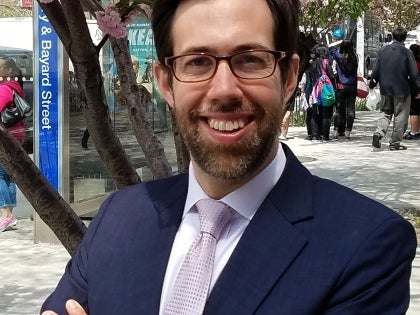
New York Times: Housing Deal Ensures Park in Brooklyn Will Expand
By LISA W. FODERARO
After months of uncertainty over the fate of the popular Brooklyn Bridge Park, city and state officials plan to sign an agreement on Tuesday that would allow limited private housing to be built there, to help pay an expected annual operating cost of $16 million.
The agreement ensures that the park, which now measures 20 acres, will be completed, eventually expanding to 85 acres on five disused piers along the East River.
In a statement Monday evening, Mayor Michael R. Bloomberg hailed the planned agreement: “Our goal when we took control of the piers was to transform them into one of the world’s great waterfront parks, and this agreement will enable us to realize that vision in its entirety.”
As a condition for its giant capital investment in the park, the city said it had to be self-sustaining financially.
Mr. Bloomberg and others said they believed that nothing but housing would create such a stream of money. But city and state lawmakers, as well as some community groups, viewed housing as a risky precedent for parks and sought to find alternative sources of money.
The mayor originally wanted three apartment buildings on the park grounds; the property taxes — actually payments in lieu of taxes — on the buildings would be dedicated to the park. The agreement would allow at least one building, near John Street, to go forward, but it would be substantially reduced in size. The two others, both near Pier 6, could shrink or even be eliminated under a complicated formula involving the Watchtower Bible and Tract Society.
The society, which has been moving many of its operations upstate in recent years, owns millions of square feet of property in Brooklyn, most of it zoned for manufacturing.
The city says that if a portion of the properties were rezoned for residential use, they would become significantly more valuable, and, if sold, would generate much higher property tax revenue.
Representatives from the Watchtower Society, also known as Jehovah’s Witnesses, were not involved in any negotiations with the city. But the idea is that the tax revenue from the sold Watchtower properties would offset the loss of payments in lieu of taxes that the two Pier 6 buildings were expected to yield. The agreement sets a deadline of Jan. 1, 2014, for the Watchtower properties to change ownership; after that date, the city will release requests for proposals for the two other apartment buildings.
Under the formula, for every square foot of Watchtower property that is rezoned residential and sold, the building space at Pier 6 would be reduced by 0.30 square feet. According to one estimate, 1.5 million square feet of Watchtower space would have to be sold to make up for the development of both buildings.
Last year, state officials agreed to let the city finish building, and paying for, Brooklyn Bridge Park. But under that agreement, two state lawmakers, State Senator Daniel L. Squadron and Assemblywoman Joan L. Millman, had veto power over the housing planned for John Street and Pier 6. There are also plans for a hotel and retail complex to help generate revenue for park operations, but those have attracted less controversy.
Mr. Squadron opposed the housing, saying there were risks inherent in relying on private development to finance such a high-maintenance park. “What this agreement does,” he said, “is propose a new, broader-base model — not as extreme as the plan that we’re changing, but a way to build a great new park in tough times.”
The plan for the park calls for tennis courts, a swimming pool, a skating rink, community space and a seasonal bubble over playing fields.
Ms. Millman, who lives in Brooklyn Heights, said that the popularity of the park in its embryonic state showed the potential for its completion; it now offers yoga classes, nature programs, movies and kayaking.
“We’re actually using the waterways,” she said, “which we couldn’t do before.”